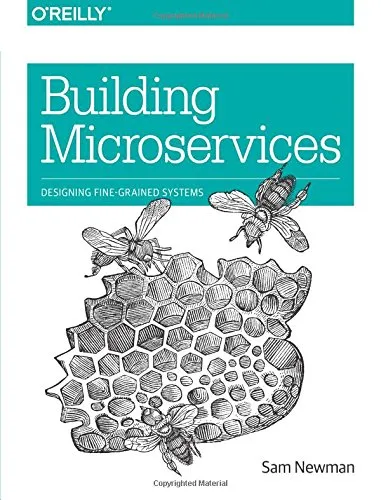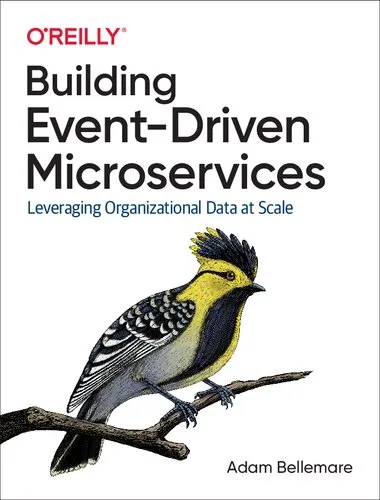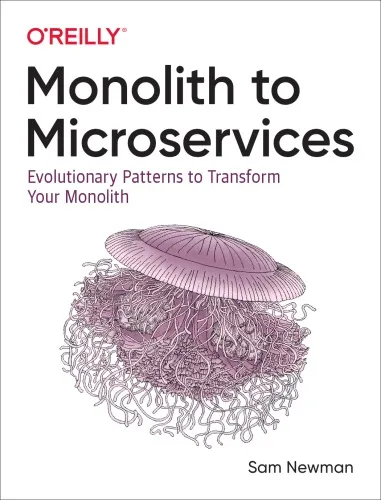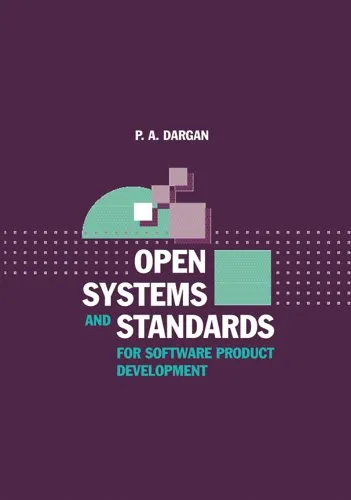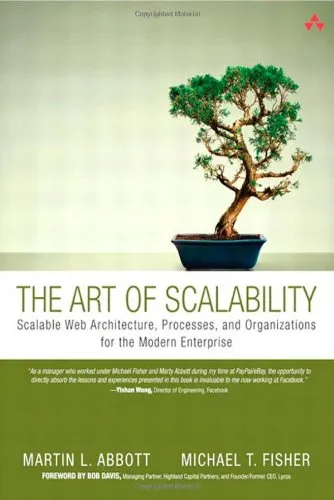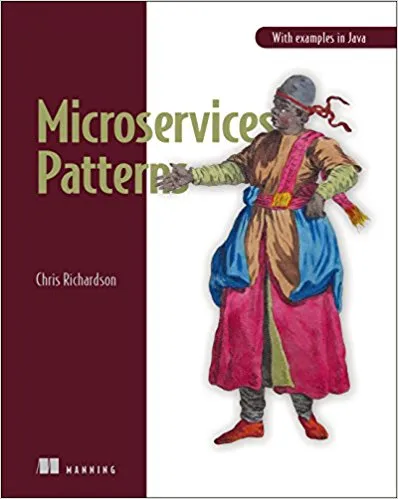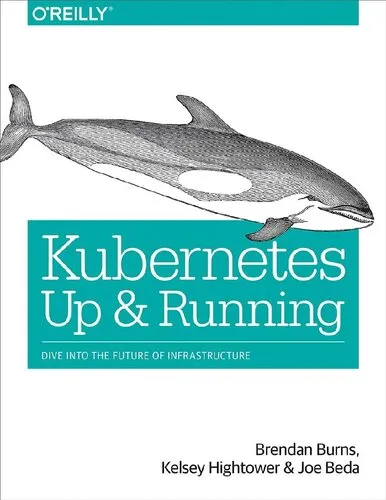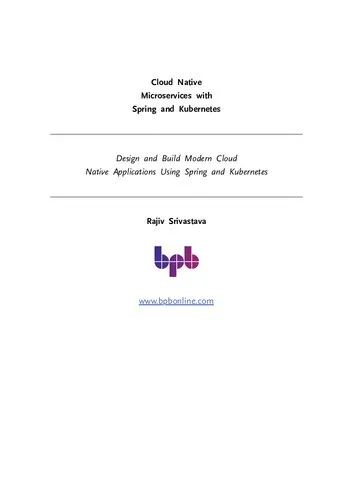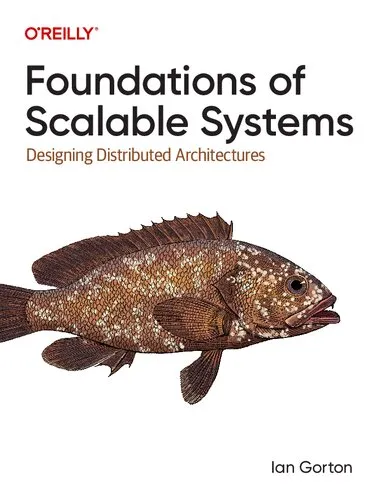Building Microservices: Designing Fine-Grained Systems (First Edition)
5.0
بر اساس نظر کاربران

شما میتونید سوالاتتون در باره کتاب رو از هوش مصنوعیش بعد از ورود بپرسید
هر دانلود یا پرسش از هوش مصنوعی 2 امتیاز لازم دارد، برای بدست آوردن امتیاز رایگان، به صفحه ی راهنمای امتیازات سر بزنید و یک سری کار ارزشمند انجام بدینکتاب های مرتبط:
Persian Summary
مقدمهای بر کتاب "Building Microservices: Designing Fine-Grained Systems"
کتاب "Building Microservices: Designing Fine-Grained Systems" اثر Sam Newman در اولین نسخه خود با هدف ارائه راهنمایی جامع در مورد طراحی و پیادهسازی سیستمهای Microservices، به خوانندگان معرفی شده است. این کتاب به علت رویکرد عملی و جزئینگری که در آن اتخاذ شده، تناسب بالایی برای مهندسین نرمافزار، معماران سیستم و توسعهدهندگانی دارد که به دنبال یادگیری و کاربرد Microservices هستند.
چکیدهای دقیق از کتاب
کتاب "Building Microservices" به تفصیل به بررسی اصول و شرایط لازم برای پیادهسازی Microservices میپردازد. نویسنده، Sam Newman، با ارائه تجربههای واقعی از پروژهها و چالشهایی که در ایجاد سیستمهای Microservices پیش میآید، سعی دارد تا به خوانندگان چارچوبی سیستماتیک جهت تحلیل و طراحی این معماری نوین ارائه دهد. او به موضوعاتی همچون چگونگی تعیین مرزهای سرویسها، فرآیند توسعه، و مدیریت دسترسیها پرداخته و بهترین شیوههای عملی را ارائه میدهد.
نکات کلیدی
- درک مفاهیم پایهای Microservices و مزایای آن نسبت به معماریهای سنتی.
- چگونگی تقسیم یک سیستم به اجزای کوچکتر و مستقلتر.
- روشهای کارآمد برای مدیریت دیتا و پیامرسانی بین سرویسها.
- پیادهسازی استراتژیهای نظارتی و امنیتی برای حفاظت از سیستمها.
نقلقولهای معروف از کتاب
"ساخت یک سیستم Microservices همانند ساختن یک تیم ارکستراست، هر عضو نقشی خاص دارد ولی جهت کسب موفقیت باید هماهنگ با دیگر اعضا باشد."
"محدود کردن اندازهی Microservices به شما اجازه میدهد تا شتاب بگیرید، اما ارتباط آنهاست که موفقیت پروژه را تعیین میکند."
چرا این کتاب اهمیت دارد
این کتاب برای کسانی که در حوزه توسعه نرمافزار و معماری سیستمها فعالیت میکنند، اهمیت ویژهای دارد. با افزایش تقاضا برای سیستمهای مقیاسپذیر و پویا، فهم درست و دقیق Microservices به یک نیاز اساسی تبدیل شده است. علاوه بر این، Sam Newman به دلیل تجارب کاری و دانش عمیق خود در این زمینه، توانسته پلی محکم میان نظریه و عمل در این کتاب بنا کند. از این رو، "Building Microservices" نه تنها به عنوان یک مرجع مهم، بلکه به عنوان راهنمای عملی برای توسعهدهندگان و معماران مدرن شناخته میشود.
Introduction to Building Microservices Designing Fine-Grained Systems First Edition
In the ever-evolving landscape of software development the concept of microservices has gained significant attention in recent years. As a seasoned expert in the field I Sam Newman have written "Building Microservices Designing Fine-Grained Systems First Edition" to provide a comprehensive guide on designing and implementing microservices-based systems. This book aims to equip developers architects and technical leaders with the knowledge and skills necessary to navigate the complexities of microservices and unlock their full potential.
Detailed Summary of the Book
"Building Microservices" is divided into 11 chapters each focusing on a specific aspect of microservices. The book begins by introducing the concept of microservices discussing their benefits and exploring the reasons behind their adoption. It then delves into the principles of designing microservices including the importance of domain-driven design the role of APIs and the need for loose coupling.
The book also covers the critical aspects of implementing microservices such as service discovery load balancing and circuit breakers. It discusses the challenges of testing and deploying microservices highlighting the need for automation and continuous integration. Additionally the book explores the importance of organizational and cultural changes required to support microservices adoption.
Throughout the book I draw on my extensive experience working with microservices providing real-world examples and case studies to illustrate key concepts and principles. The book concludes by discussing the future of microservices and the potential pitfalls to avoid when adopting this approach.
Key Takeaways
By reading "Building Microservices" you can expect to gain a deep understanding of the following key concepts
- The principles of designing microservices including domain-driven design and loose coupling
- The importance of APIs and service discovery in microservices
- Strategies for implementing load balancing circuit breakers and other critical infrastructure components
- Best practices for testing and deploying microservices including automation and continuous integration
- The organizational and cultural changes required to support microservices adoption
Famous Quotes from the Book
Here are a few quotes from the book that highlight the key themes and ideas
"Microservices are not a free lunch. They introduce new complexity and that complexity has a cost."
"The biggest challenge with microservices is not the technology it's the organization and the culture."
"You can't have a microservices architecture without a high degree of automation. It's just too complex to manage manually."
Why This Book Matters
"Building Microservices" matters because it provides a comprehensive and practical guide to designing and implementing microservices-based systems. The book is written for developers architects and technical leaders who want to unlock the full potential of microservices and create more scalable resilient and adaptable systems.
In an era where software development is increasingly complex and fast-paced "Building Microservices" offers a unique perspective on how to navigate the challenges of microservices adoption. By reading this book you'll gain a deeper understanding of the principles practices and pitfalls of microservices and be better equipped to lead your organization towards a more agile and responsive future.
دانلود رایگان مستقیم
شما میتونید سوالاتتون در باره کتاب رو از هوش مصنوعیش بعد از ورود بپرسید
دسترسی به کتابها از طریق پلتفرمهای قانونی و کتابخانههای عمومی نه تنها از حقوق نویسندگان و ناشران حمایت میکند، بلکه به پایداری فرهنگ کتابخوانی نیز کمک میرساند. پیش از دانلود، لحظهای به بررسی این گزینهها فکر کنید.
این کتاب رو در پلتفرم های دیگه ببینید
WorldCat به شما کمک میکنه تا کتاب ها رو در کتابخانه های سراسر دنیا پیدا کنید
امتیازها، نظرات تخصصی و صحبت ها درباره کتاب را در Goodreads ببینید
کتابهای کمیاب یا دست دوم را در AbeBooks پیدا کنید و بخرید
سوالات پرسیده شده از این کتاب
1830
بازدید5.0
امتیاز2
نظر98%
رضایتنظرات:
5.0
بر اساس 2 نظر کاربران
sajjad
29 ژانویه 2024، ساعت 16:02
Inspiring book!
sajjad
29 ژانویه 2024، ساعت 16:02
Inspiring book!
Questions & Answers
Ask questions about this book or help others by answering
No questions yet. Be the first to ask!










